5 Flowers That Can Thrive in the Winter, Experts Say
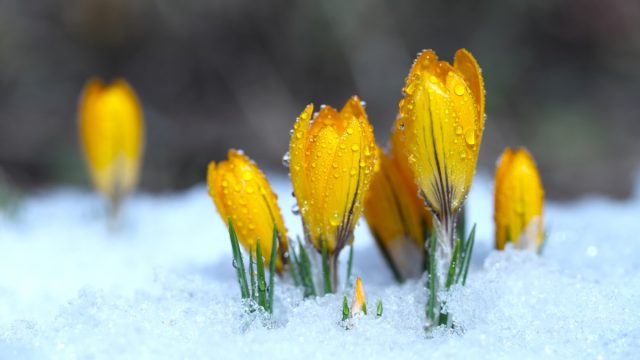
Winter is associated with many outdoor activities—skiing, sledding, snowshoeing—but it’s probably not the season you plan to hunker down in the garden. Interestingly enough, however, experts say certain plants are known to thrive in winter weather, and that includes some hardy flowers.
According to Carly Campbell, gardening expert and founder of the Mommy on Purpose blog, winter bloomers are lower-maintenance and hardier than those that flourish in the spring and summer. “This is due to the cold temperature, which limits the growth of pests and diseases while also reducing evaporation,” she explains. “In addition, the cold temperature slows down the development of the plants, allowing them to store up energy reserves, which will help them to thrive in winter months.”
When spring rolls around, you’ll be rewarded with “colorful blooms to kick off a beautiful spring season,” Lindsay Pangborn, Bloomscape’s plant expert, tells Best Life.
The success of your efforts will, of course, be tied to the region you live in, and how cold you can realistically expect temperatures to drop—you can confirm these details via the U.S. Department of Agriculture (USDA) Plant Hardiness Zone Map. You might need to invest in some protection from frost or freezing in the event it gets too chilly, but if you’re curious as to what plants are best equipped to battle the cold, you’re in luck.
Read on to discover five flowers experts say you won’t have to worry about this winter.
READ THIS NEXT: 7 Plants You Can Buy That Are Actually Dangerous Invasive Species.
1
Pansies and violas
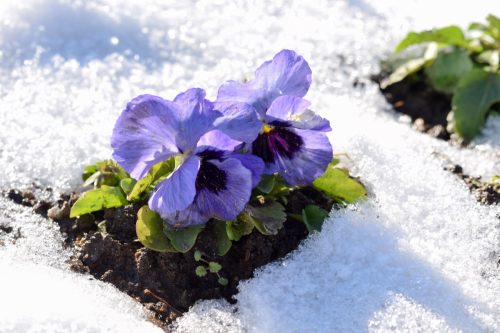
By far, the most widely suggested flower varieties that thrive in winter were violas and pansies, as they can actually withstand a “hard freeze,” according to the Spruce.
Lindsey Hyland, creator of Urban Organic Yield, notes that both flowers (pansies are a derivative of violas) can tolerate temperatures as low as 15 degrees Fahrenheit, and Campbell adds that they’re a popular choice if you want “winter-friendly color” in your yard.
“Pansies are a common winter bloomer and they come in a variety of bright, cheerful colors that can really bring some life to your garden,” Jen Stark, master gardener and founder of Happy DIY Home, says. You’ll see these hues of red, yellow, orange, and purple throughout late winter, as they continue to bloom until the weather warms up in spring, according to Aaditya Bhatta, editor and founder of Plants Craze.
As a bonus, violas have “delicate petals and look beautiful when planted in groups,” Stark says.
2
Ornamental kale and cabbage
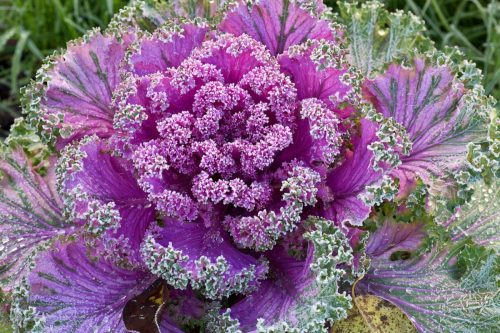
Ornamental kale and cabbage aren’t the same as the varieties you’d find in a salad. Instead, they have “much fancier and more colorful foliage than their cousins from the vegetable garden,” according to the University of Wisconsin (UW)-Madison.
Campbell echoes this, explaining that you can look forward to “large and colorful flowers” as an “excellent addition to colder-month flower beds.” UW-Madison says that these colors get even more vivid when temperatures drop, specifically below 50 degrees Fahrenheit.
For those in the chilliest parts of the U.S., these ornamental varieties might be the plants for you—they’re still kicking even when temperatures drop to the single digits.
Diana Cox, the gardener behind The Gardening Talk, also includes ornamental kale on her list of winter-ready plants, noting that it’s available in various colors, including purple, pink, and white.
If you need a snack, rest assured that these flowers are edible, but UW-Madison confirms they’re on the bitter side and they lose their lustrous color if you cook them. Try using leaves as a garnish instead, the university advises.
READ THIS NEXT: 5 House Plants That Don’t Need Sunlight.
3
Primrose
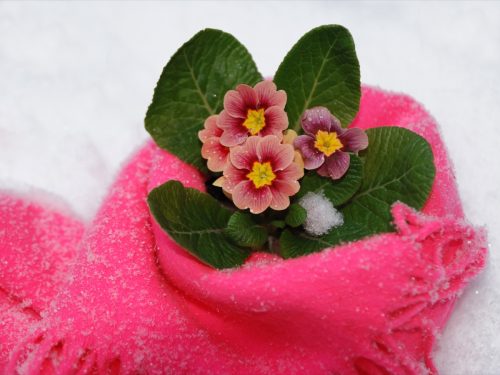
Primrose is a great addition to a winter garden, helping you secure that pop of color we’re all searching for in drearier months.
The flowers of the primrose are vibrant and particularly cold-hardy, according to Southern Living. In the South, you can even plant them as late as February—but you need to ensure that they’re situated in partial shade and watered regularly.
Hyland notes that these flowers prefer more moderate temperates, but they’re able to withstand more severe winter weather if they’re mulched.
4
Cyclamen
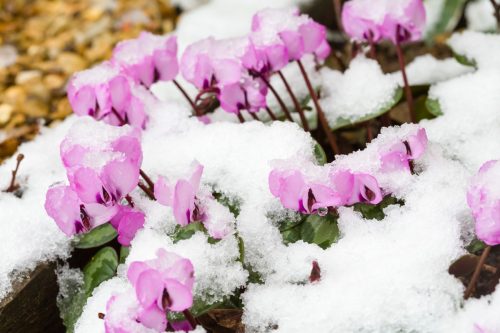
Cyclamen is another winter warrior, according to Stark, but it’s one that will fare better in cool (not freezing) environments. According to Hyland, these flowers can withstand temperatures as low as 40 degrees. So, like primrose, they’re an optimal choice for those who aren’t consistently buckling down in blizzards.
Cyclamen is easy to grow, and its heart-shaped leaves and beautiful foliage will last until the spring when it goes dormant, Gardening Know How explains. You can’t go wrong with this colorful choice, which offers up beautiful pink blooms when you need them most—late in winter.
For more gardening advice delivered straight to your inbox, sign up for our daily newsletter.
5
Hellebores
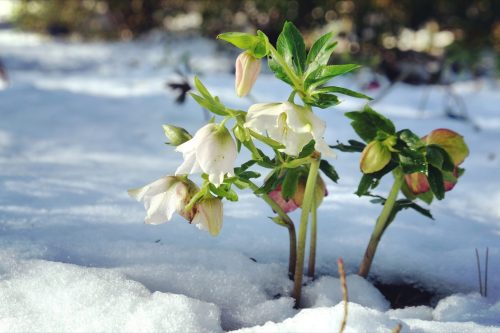
Another winter bloom that experts recommend is the hellebore, also known as the Christmas rose, according to Stark. “Their white and pink blooms add a touch of elegance to any garden,” she says.
It’s worth noting that these flowers are not really “roses,” but are instead members of the buttercup family, per HGTV.
Bloom time is dependent on the kind of hellebore you grow and the climate where you live, but you can generally expect flowers to pop between December and April, according to The Spruce. Hellebores are also a good choicer for colder regions, as they’re “very hardy and can withstand harsh winter weather,” Cox says.